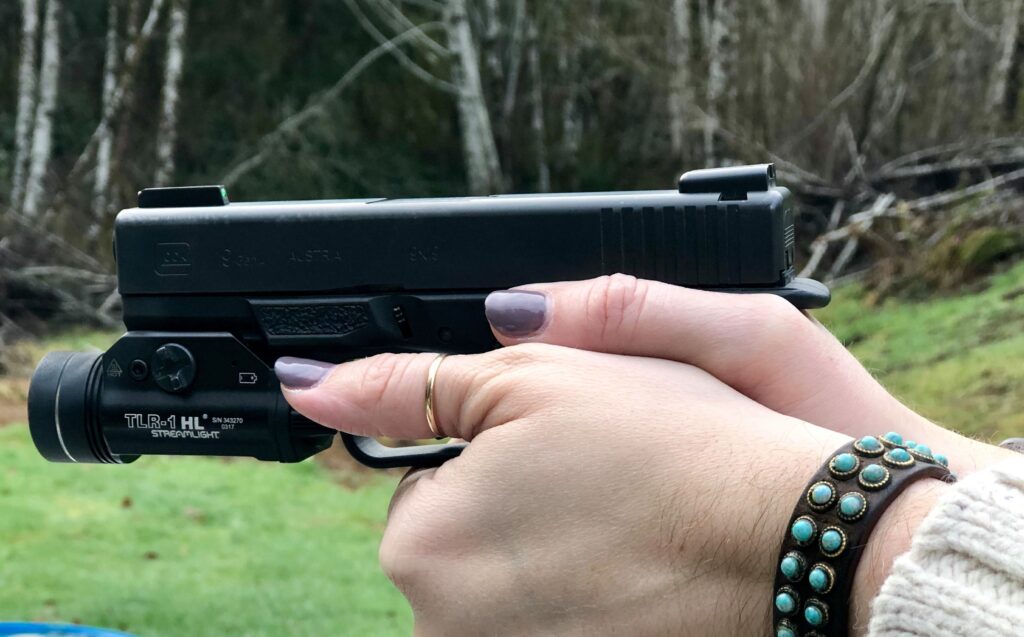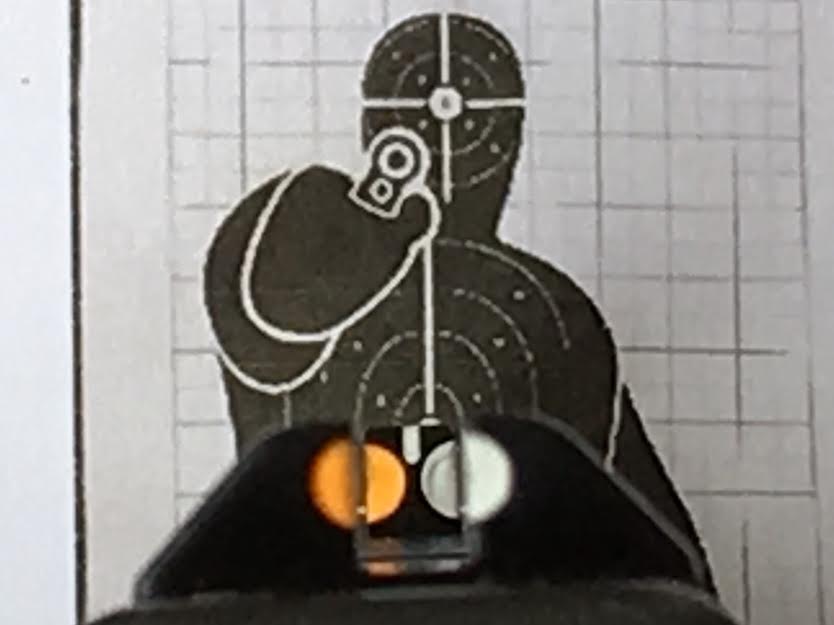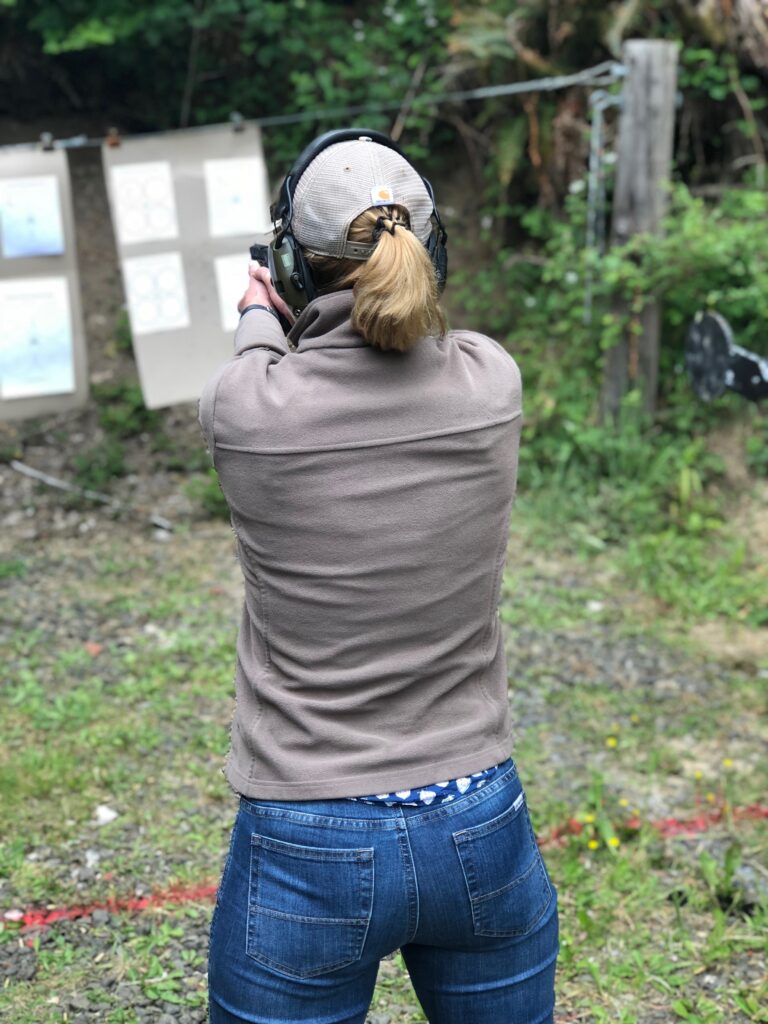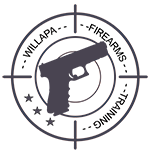YOU NEED TO GET A GRIP

High and tight, thumbs forward, middle finger of your primary hand rubbing on trigger guard, touch as much of the gun frame as possible. Create friction, support hand thumb canted forward. Repeat the grip correctly until it is natural and easy to assume. Do not change your grip pressure while pressing the trigger, this is grip consistency. Have a tight flesh master grip, get your head out of the gutter we are talking about the pistol, that firmly holds the pistol without causing unnecessary movement and allows your trigger finger to work independently.
USE YOUR SIGHTS
Know where to look! If you are shooting iron sights, you need equal height and equal light. Get a flash sight picture with front sight in clear focus. Do not press the trigger until you see the sight aligned correctly to the target! You decide when to press the trigger, be a thinker.
A common mistake made by newer shooters is looking over the top of the rear sight. You must look through the rear sight to aim. If you can achieve front sight focus while aligning to the target with both eyes open, that is great. If you cannot obtain a clear sight picture, close your non dominant eye and work towards being able to shoot with both eyes open.

Bring your sights to your eyes, not your eyes to your sights.
If using a red dot sight pistol, you must stay threat focused and just “see the dot” with both eyes open.
While aiming is obviously important, the most important fundamental of shooting is next, trigger press.
TRIGGER PRESS IS KING
While using the correct or “master grip,” press the trigger straight and to the rear without moving your sights! Sounds easy but is it?
Words have meaning and you need to “press” the trigger; not pull it or squeeze it. Think about the word press as opposed to the other words we use and what do they mean? Once you make the mental decision to press the trigger, press it in one continuous motion without pause. All you are doing when you do the start and stop and start motion on the trigger is trying to predict the moment of ignition which is translated as anticipating.
STANCE

Marksmanship shooting requires a great stance. Combat shooting probably does not involve a ton of “proper stance” as you are going to be moving to cover or at least just stepping offline from the attack to buy time. Practice moving and stopping in your best stance position so that you end up in it without thinking about it. Set up your stance for success. Align your hips to the target if time allows, give yourself a solid fighting stance with a slight forward lean.
KEEP PRESSING, KEEP THINKING
The mental process of shooting is just as important as the physical aspect of shooting. Most of us are shooting our firearms in preparation of maybe needing to use it at some point in our life. Mentally rehearse the events after the shot happens. Visualize the target going down to the ground. Once down, ask yourself, did I hit my intended target? Did the rounds I sent down range work? Am I happy with the condition of my gun or do I need to fix it with a reload or malfunction clearance? Is it time to call 911 or is it time to finish the fight and be my own first responder?
SEEK OUT TRAINING
Do not be afraid of taking a class that is “beneath you.” You might find that you have missed a fundamental skill and that lower-level course fills in a blank spot that you had. Build on the skills you have learned and continue to challenge yourself. Do not underestimate the value of dry fire practice or tools like the Mantis and SIRT pistol from NextLevel Training. Train yourself to a level of unconscious competence that allows you to properly do a skill without thinking about it.
If you are anywhere near us in SW Washington, come train with us on our private range. We would love to help you take your skills to the next level at Willapa Firearms Training.
